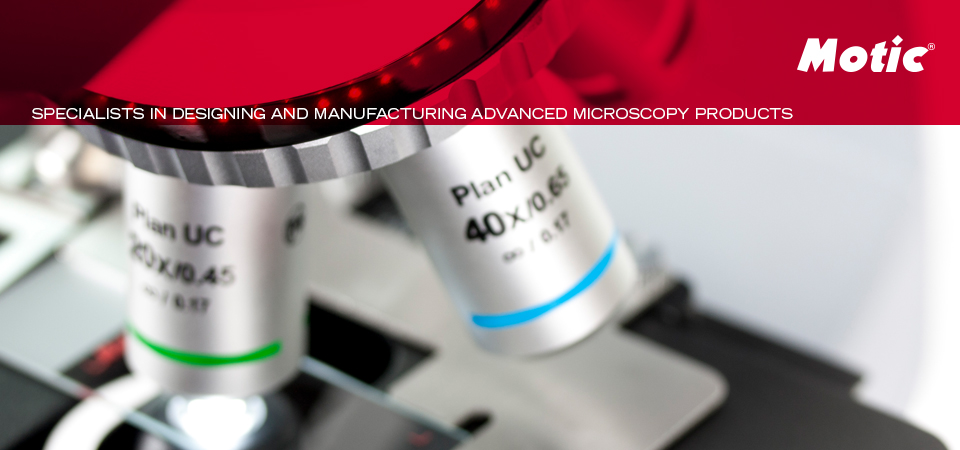The marriage of light microscope and digital camera is a story of success. During the last decade, Motic’ digital products expanded into areas and markets where digital microscopy has been out of reach due to its price perception. One necessary component of this success is a powerful yet easy-to-handle software which covers concordant requirements in medical, educational and industrial applications. From the beginning, Motic Images Plus software supplied useful tools to optimize a fast live image for storage as a still image, image sequence or video. In a second step, a number of quantification tools enable multiple measurements ready to be exported for further use.
Color fidelity is a self-evident expectation on any digital camera. The new Motic Images Plus 3.0 software comes with an interactive White Balance and Background Balance in order to optimize the image background in terms of color temperature or shading. The characteristic of CMOS sensors is responded by a Color Correction tool.
A calibrated Scalebar in the live image helps for a first estimate of size and can be saved as an overlay; a variable Grid may replace the pattern of various counting chambers. But also Interactive Measurements are now possible within the Live image. The necessary calibration slide is integral part of Motic’s All-in-One camera concept and causes no additional costs.
Motic Images Plus 3.0ML will start shipping as standard with the new upgraded Moticam Plus cameras (that will come out in the next coming months) as well as the new multi-function HDMI camera, the Moticam 1080.
As is normal practice with Motic, each end-user can upgrade their existing Motic Images Plus 2.0 to the new 3.0 anytime, anywhere, and free of charge. This sleek, new and thought-out software package is running with an identical interface on Windows, Apple or Linux operating systems and certainly empowers your microscope to be a more efficient scientific tool. Even more as Motic Images Plus 3.0 is a real Multilingual software; a change of language is done within a second.
Click here to download the new Motic Images Plus 3.0.









